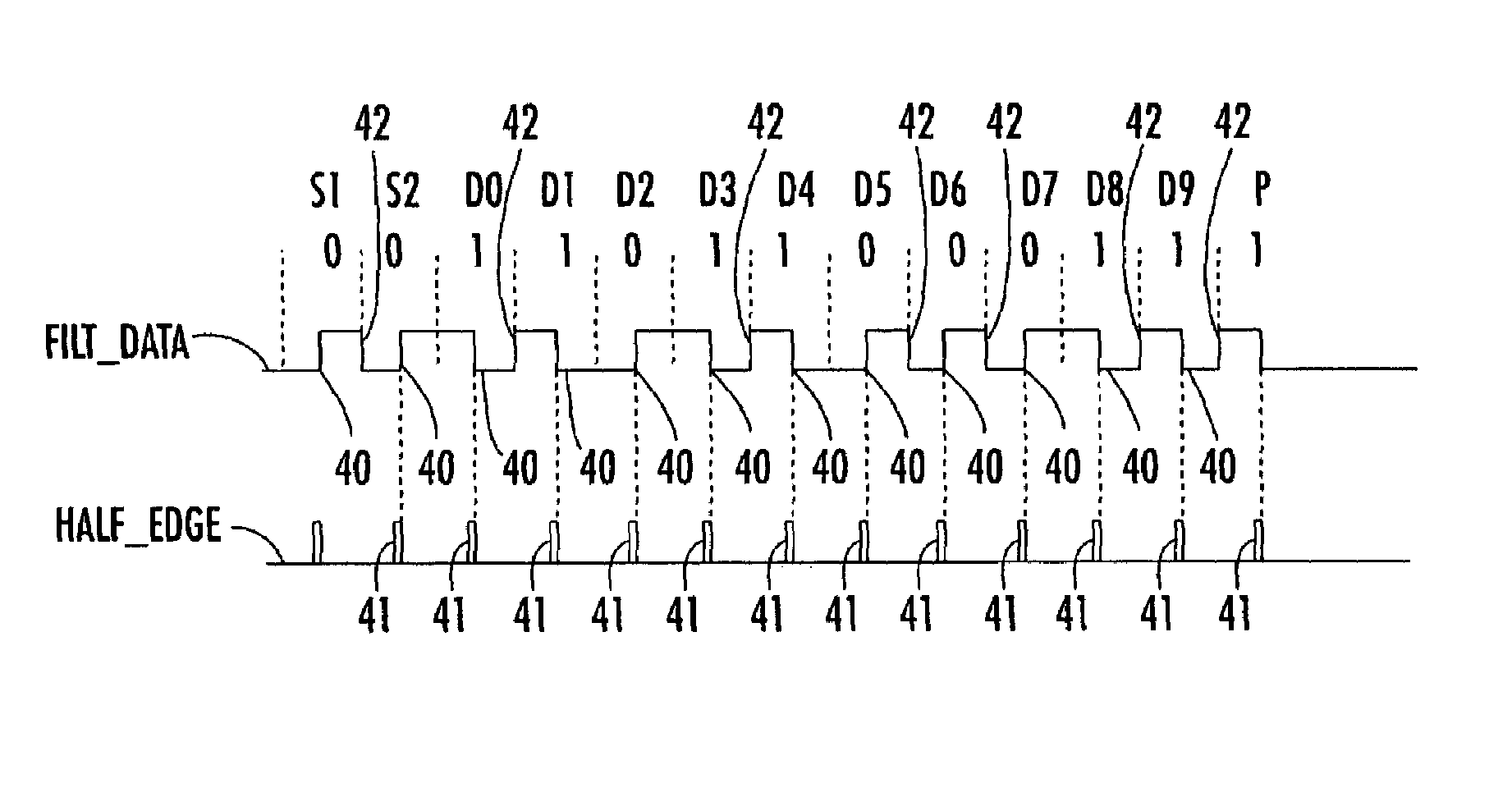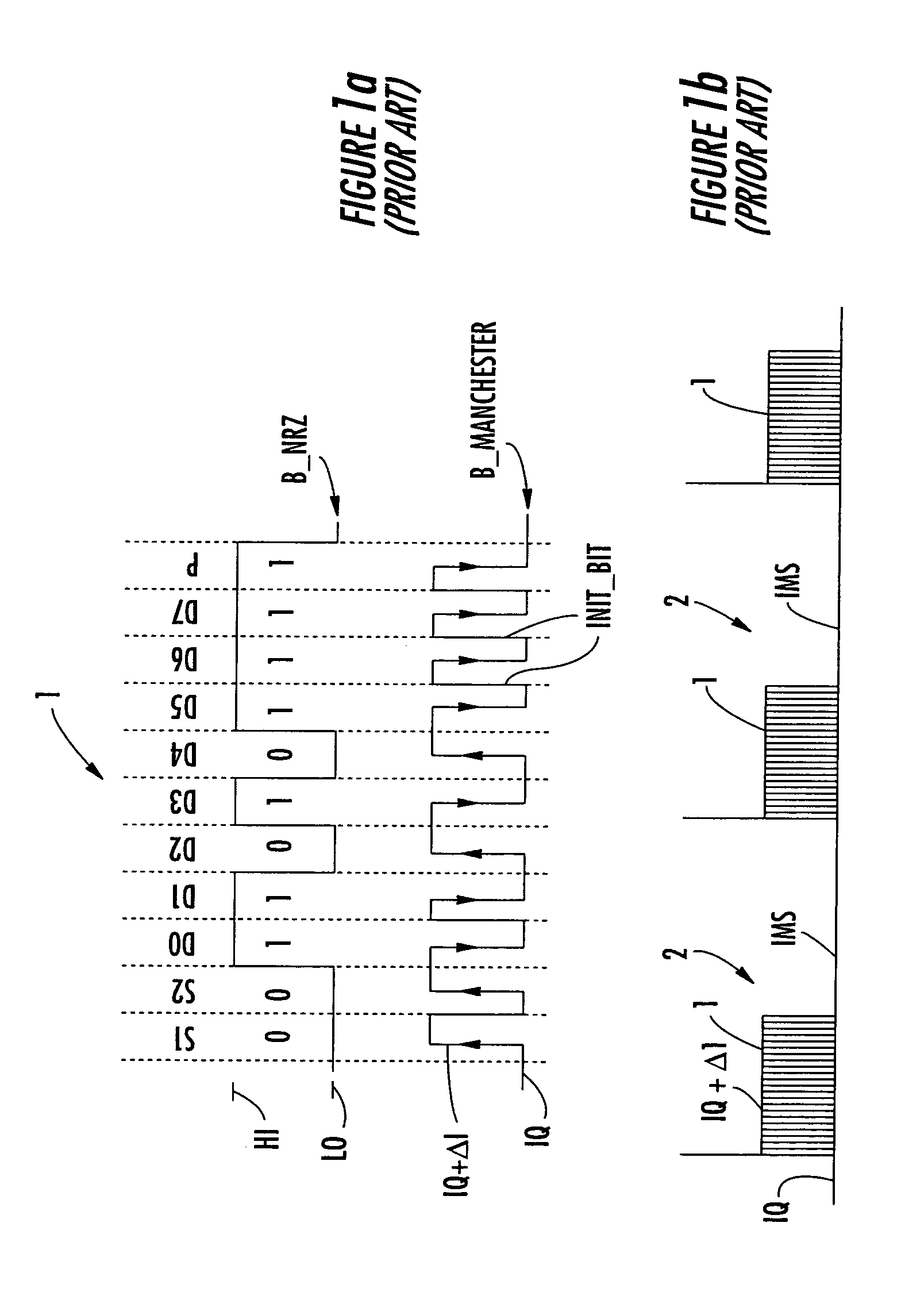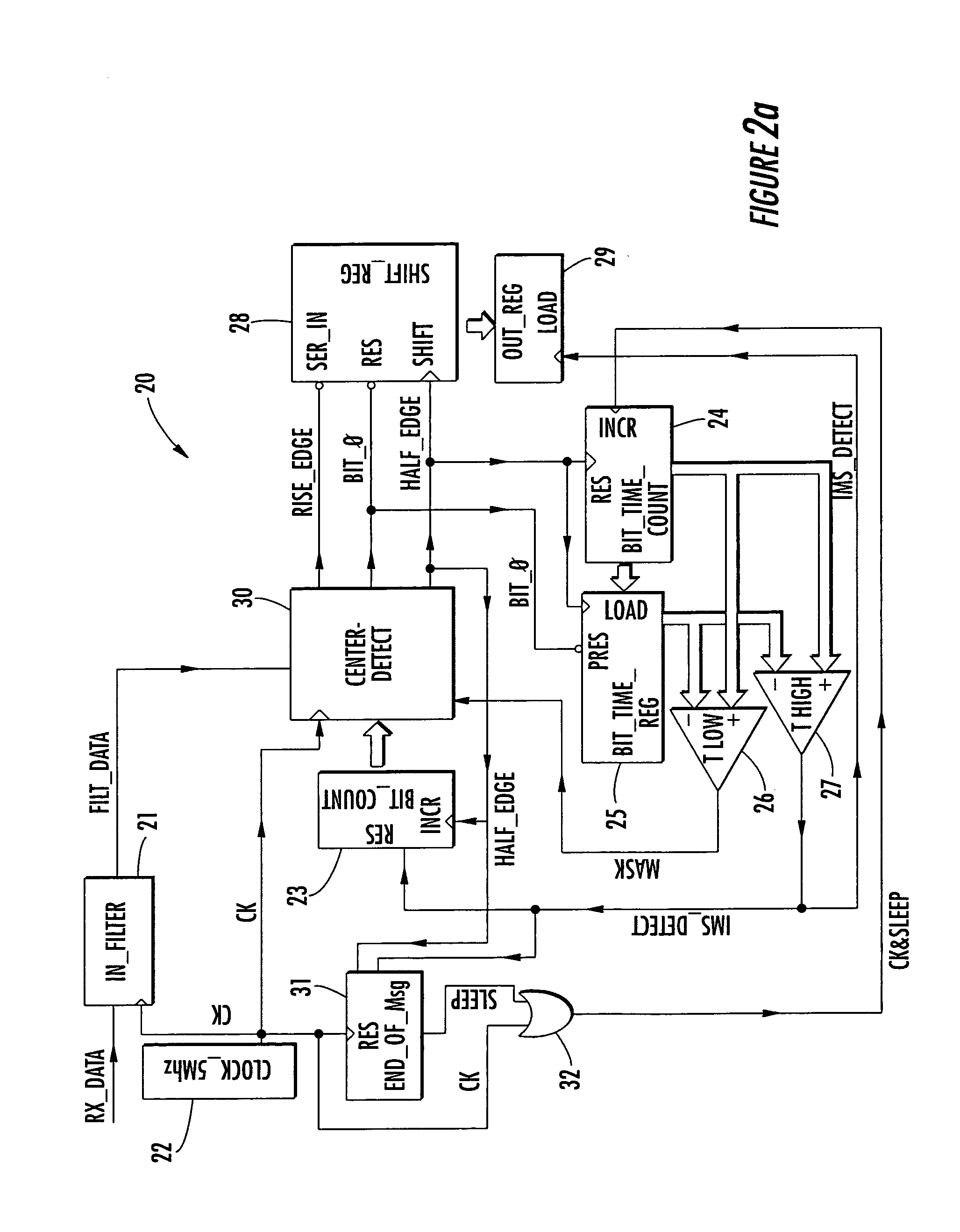Decoding method and Manchester decoder
a decoding method and decoding technology, applied in the field of digital transmission of data, can solve the problems of significant waste in transmission, jitter on the received data, and fluctuations in the length of the bit period,
- Summary
- Abstract
- Description
- Claims
- Application Information
AI Technical Summary
Benefits of technology
Problems solved by technology
Method used
Image
Examples
Embodiment Construction
[0021]The preferred embodiment of this invention described below refers to the serial transmission of Manchester encoded packet data as used by the PAS (Peripheral Acceleration Sensors) protocol. The teachings of the present invention can also be extended to the decoding of Manchester data used in applications different from those referred below.
[0022]The PAS protocol is an industrial standard for the transmission of accelerometric data from a remote sensor to a central processing unit and is used, for example, in vehicle airbag systems. These systems comprise accelerometric sensors generally placed on the front of the vehicle. Each one of these communicates its acceleration value to a central unit modulating the current in a double-wire serial line.
[0023]Each acceleration sample is transmitted in the form of a data packet, with Manchester type encoding. In FIG. 1a, a data packet 1 is indicated with B_NRZ, for example, of the type produced by an acceleration sensor before Manchester...
PUM
 Login to View More
Login to View More Abstract
Description
Claims
Application Information
 Login to View More
Login to View More - R&D
- Intellectual Property
- Life Sciences
- Materials
- Tech Scout
- Unparalleled Data Quality
- Higher Quality Content
- 60% Fewer Hallucinations
Browse by: Latest US Patents, China's latest patents, Technical Efficacy Thesaurus, Application Domain, Technology Topic, Popular Technical Reports.
© 2025 PatSnap. All rights reserved.Legal|Privacy policy|Modern Slavery Act Transparency Statement|Sitemap|About US| Contact US: help@patsnap.com



